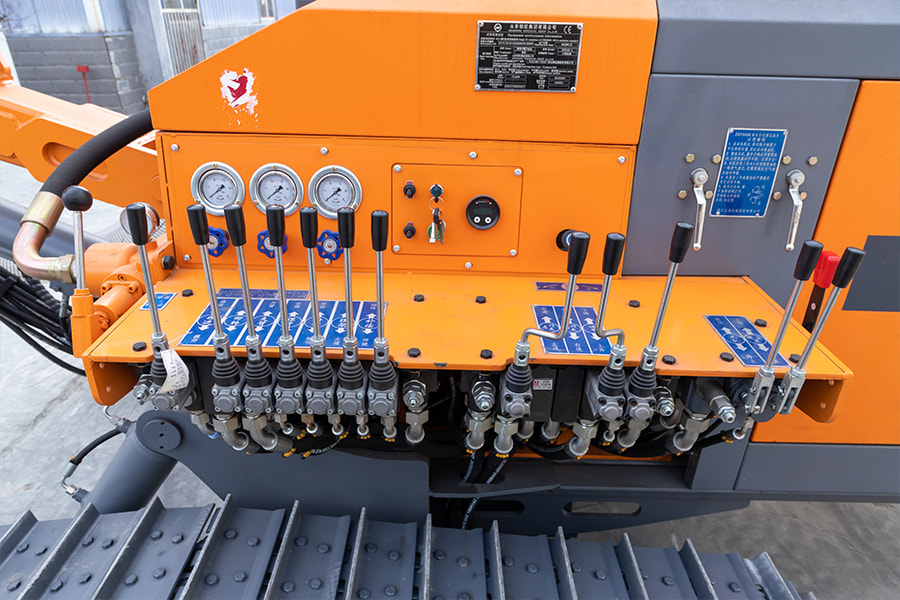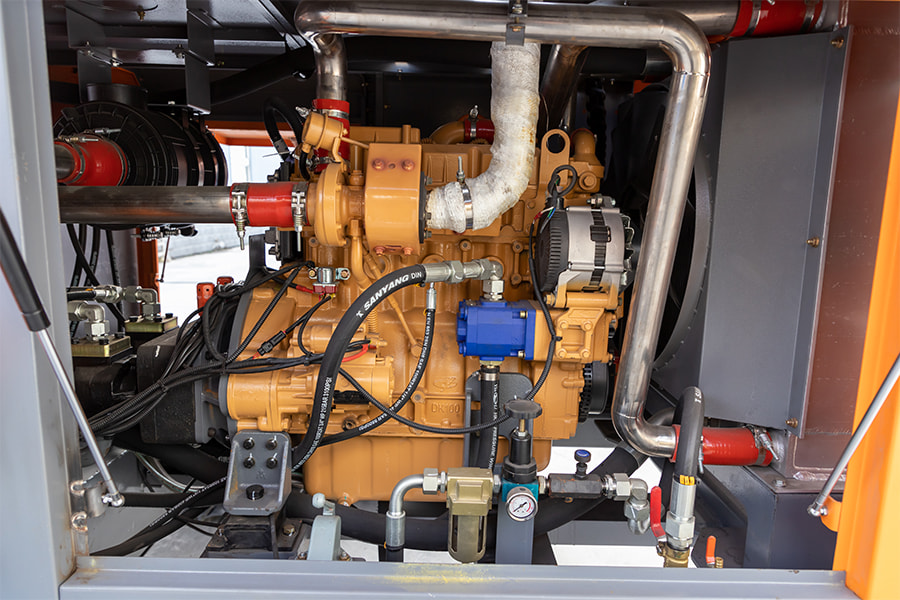


1. Inspect the Drill Rig Daily
Start each day with a thorough inspection of your DTH drill rig. Check for any visible signs of wear and tear, loose bolts, or other potential issues.
Pay close attention to the drill bit, drill pipe, and hydraulic hoses. Early detection of problems can prevent more serious damage and costly repairs.
2. Lubricate Moving Parts
Proper lubrication is vital for the smooth operation of your drill rig. Ensure all moving parts, including the rotary head, hammer, and bearings, are
well-lubricated. Use the recommended lubricants and follow the manufacturer’s guidelines for frequency and quantity. This helps reduce friction
and wear, extending the lifespan of your equipment.
3. Check Hydraulic Fluid Levels
Hydraulic systems are the heart of DTH drill rigs. Check the hydraulic fluid levels daily and top up if necessary. Low fluid levels can lead to inefficient
operation and potential damage to the hydraulic components. Additionally, inspect the hydraulic hoses and connections for leaks or damage.
4. Monitor Air Pressure
The performance of your DTH drill rig heavily depends on maintaining the correct air pressure. Check the air compressor and pressure gauges daily
to ensure they are functioning properly. Inconsistent air pressure can lead to inefficient drilling and increased wear on the drill bit and hammer.
5. Clean the Drill Rig
Keeping your drill rig clean is an often-overlooked aspect of maintenance. Dirt and debris can cause unnecessary wear and tear on moving parts.
After each day’s work, clean the drill rig thoroughly, paying special attention to the air filters, cooling system, and engine bay. A clean rig operates
more efficiently and is easier to inspect for potential issues.
6. Inspect the Drill Bit and Hammer
The drill bit and hammer are critical components of your DTH drill rig. Inspect them daily for signs of wear and damage. Replace worn-out drill
bits and hammers promptly to ensure efficient drilling and prevent damage to the drill rig. Regular maintenance of these components ensures
optimal performance and reduces downtime.
7. Check the Fuel and Oil Levels
Ensure that the fuel and oil levels are adequate before starting any drilling operations. Low fuel levels can cause the engine to run inefficiently,
while low oil levels can lead to engine damage. Use high-quality fuel and oil as recommended by the manufacturer to keep your drill rig running smoothly.
8. Examine the Electrical System
The electrical system is vital for the operation of your DTH drill rig. Check the battery, wiring, and connections daily to ensure they are in good
condition. Look for signs of corrosion, loose connections, or damaged wires. A well-maintained electrical system ensures reliable performance
and reduces the risk of unexpected breakdowns.
9. Test the Safety Features
Safety should always be a priority when operating a DTH drill rig. Test all safety features, including emergency stop buttons, alarms, and protective
guards, to ensure they are functioning correctly. Regular testing and maintenance of safety features protect operators and prevent accidents on
the job site.
10. Keep a Maintenance Log
Maintain a detailed log of all maintenance activities, including inspections, repairs, and replacements. This log helps track the condition of your
drill rig and schedule preventive maintenance. A well-documented maintenance history can also be useful for troubleshooting issues and making
informed decisions about equipment upgrades or replacements.